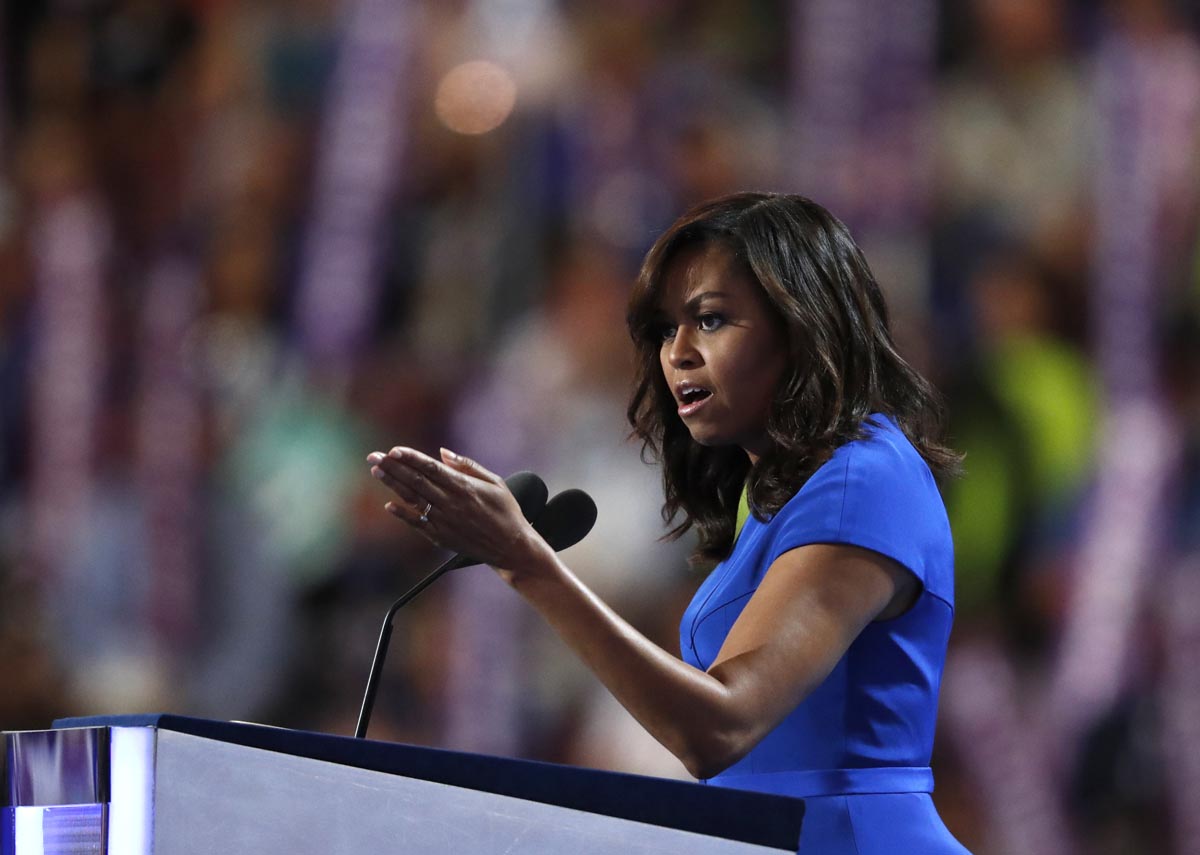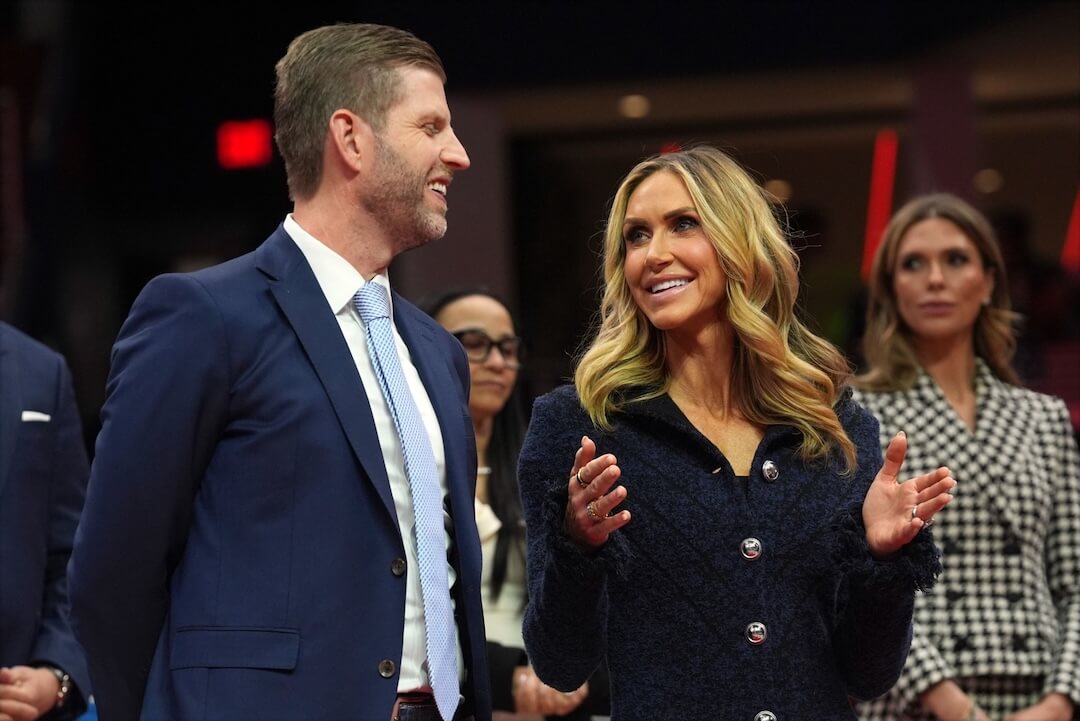Great oratory magnifies the lessons of great writing. Written for the ear, memorable speeches tend to use certain rhetorical devices — such as parallelism or emphatic word order — in greater measure than less dramatic forms of communication. The language strategies rise to the surface, so you may not even need a pair of X-ray reading glasses to see them.
Related: The Power and Persuasion of the Spoken Word
Last night I listened to Michelle Obama’s speech at the Democratic National Convention. It has been widely praised, even by Hillary Clinton’s archrival, Donald Trump. Some commentators ranked it among the best such convention speeches in decades.
What is it about the First Lady’s words that worked for so many? If we can answer that question, we can store those writing strategies in our toolbox.
I am relying on a transcript of the speech published by Vox. Here it is if you prefer to read the whole thing first. If you prefer, follow my lead through some of the most significant parts of Michelle Obama’s speech, beginning with its first paragraph:
“It is hard to believe that it has been eight years since I first came to this convention to talk with you about why I thought my husband should be president. Remember how I told you about his character and his conviction? His decency and grace? The traits we have seen every day as he served our country in the White House.”
Lesson one: Liberate your pronouns. Use first person, second person and third person to create specific effects. Look at all the pronouns in that paragraph — and throughout the speech — each one doing its job. “I” or “me” or “my” makes a personal appeal. “We” or “us” proclaims collective power. “You” makes prose sound conversational. The third person points the camera away from the speaker.
“I also told you about our daughters, how they are the heart of our hearts, the center of our world, and during our time in the White House we have had the joy of watching them grow from bubbly little girls into poised young women.”
Lesson two: Unlock your diction — your word hoard — to choose language most appropriate to your topic and mission. Michelle Obama’s words seem chosen as an antidote to what some have described as Donald Trump’s dystopian vision of America and the world. When he speaks, bats flap their wings in caves. When she speaks, little birds chirp and alight on her shoulders. Every key word here has a positive connotation: daughters, hearts, center, world, joy, grow, bubbly little girls, poised young women.
“I will never forget that winter morning as I watched our girls, just 7 and 10 years old, pile into those black SUVs with all those men with guns.”
Lesson three: Find a visual image to help you tell the story. This anecdotal image moves the speech closer to narrative and imprints itself on the memory of the audience. The juxtaposition of elements — little girls with noses pressed against the glass in a scary car filled with men with guns — creates a tension that can be vicariously experienced.
“How we urged them to ignore those who question their father’s citizenship or faith. How we insist that the hateful language they hear from public figures on TV does not represent the true spirit of this country. How we explain that when someone is cruel or acts like a bully, you don’t stoop to their level.”
Lesson four: Unleash the power of three. Notice how often the speaker relies upon a pattern of three to make her point. This is one of the oldest tricks in the orator’s book. In literature, three is always the largest number. “Of the people, by the people, for the people.” Four examples or 40 become an inventory. Three encompasses the world, creating the illusion we know everything we need to know.
“Our motto is, when they go low, we go high.”
Lesson five: Express your best thought in a short sentence. This is one of the best lines in the speech for a number of reasons. It’s a short sentence, only seven words. Each word is a single syllable. There is parallelism between “they go low” and “we go high,” emphasized by the repetition of the word “go.” The sentence is complex, that is, it begins with a subordinate clause “When they go low,” which describes the opponent’s weak move, followed by a main clause that gives greater weight to the speaker’s values.
“Kids like the little black boy who looked up at my husband, his eyes wide with hope, and he wondered, Is my hair like yours?”
Lesson six: Find a focus. Stick with it. In the story “The Lottery,” by Shirley Jackson, the winner of the town’s annual lottery gets stoned to death. It is a surprise ending, but there are several mentions of the word ‘stones’ as foreshadowing — never “rocks.”
If I had to choose one word to describe the speech, it would be “kids.” It is repeated five times on a single page. She also uses words like children, sons and daughters, but the informality of kids draws you in: “So, how are the kids?” There is a significant literature in African-American culture about the issue, the problem, the glory of hair. Of “good” hair, and “bad” hair. It feels almost daring for Michelle Obama to refer to this incident, to turn a taboo into a parable and a blessing.
“Somebody who knows this job and takes it seriously. Somebody who understands that the issues of our nation are not black or white. It cannot be boiled down to 140 characters. Because when you have the nuclear codes at your fingertips and the military in your command, you can’t make snap decisions.”
Lesson seven: Let the shark swim under the surface. Remember “Jaws?” Remember how long it took for you to see the shark jump out of the water? Until then, you only heard creepy music and saw the consequences of humans being attacked.
In the “Harry Potter” series, we don’t often get a direct look at the Dark Lord, the evil Voldemort. Wizards fear to speak his name. The weird-coiffed Donald Trump looks nothing like the reptilian Voldemort, but there is a bit of “He Who Shall Not Be Named” in this critique, as if even uttering his name would pollute the language and meaning of her oration.
“This is the story of this country. The story that has brought me to the stage tonight. The story of generations of people who felt the lash of bondage, the shame of servitude, the sting of segregation, who kept on striving, and hoping, and doing what needed to be done. So that today, I wake up every morning in a house that was built by slaves. And I watch my daughters — two beautiful intelligent black young women — play with the dog on the White House lawn.”
Lesson eight: Place the emphatic words at the end. This, for me, was the dramatic climax of the speech, a moment of catharsis. It brought a tear to my eye, when I first heard the speech, and again the next morning when I watched highlights.
I feel the mojo in this paragraph. The alliteration. The triple use of three examples: story, story, story; lash, shame, sting; striving, hoping, doing. Two powerful sentences follow, one which ends with a great passive construction, “a house that was built by slaves”; the next placing the wonderfully familiar (girls playing with dogs) up against the symbolically majestic (the White House lawn).







